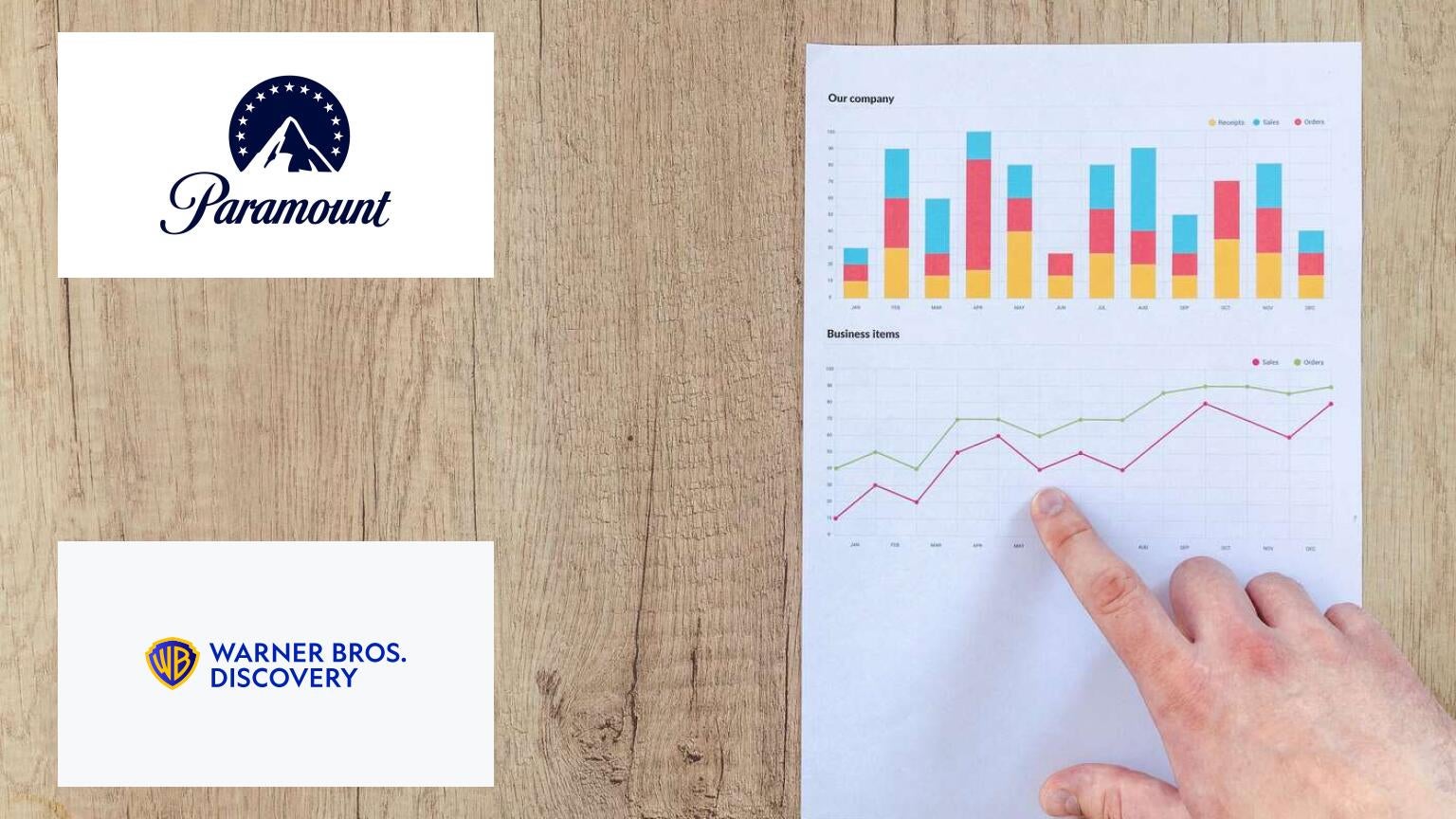Why Are Warner Bros. Discovery and Paramount Still Struggling as Other Streamers Become Profitable?
Why Are Warner Bros. Discovery and Paramount Still Struggling as Other Streamers Become Profitable?
Paramount and WBD are over-reliant on linear networks that are rapidly seeing their bottoms fall out.

Last week’s news that Disney had reached streaming profitability one quarter early than initially forecast was just the latest sign that, slowly but surely, Hollywood’s big legacy media companies are figuring out how to make streaming pay. It hasn’t been an easy road, and there will be more growing pains along the way, but why are some companies having more success than others? Warner Bros. Discovery and Paramount Global are two firms that stand out as they continue to struggle, and a look at how much each relies on their linear channels to bring in revenue reveals why.
Key Details:
- WBD and Paramount wrote down the amount their cable channels are worth by a collective $15 billion last week.
- Both companies see 50% of their revenue or more generated by linear networks, whereas Disney and Comcast are both at less than 30%.
- Paramount has already explored selling some assets, and WBD may not be far behind.
WBD’s latest quarterly earnings report showed that its flagship streaming service Max had gained 3.6 million new customers, the highlight of the direct-to-consumer (DTC) portion of the report. However, it also showed that the segment lost $107 million during the quarter, after beginning the year as profitable.
Paramount+ and the rest of Paramount Global’s streaming operations showed a $26 million global profit, and the company says it is still on track to achieve domestic profitability by 2025. But operating at streaming break-even isn’t going to be enough for WBD and Paramount, which is part of the reason why both companies’ stock prices have continued to fall in recent days.
The biggest problem for Paramount and WBD is that neither’s streaming profits are enough to make up for continuing declines from their linear channels. WBD is taking a $9.1 billion write-down on its core cable networks, including TNT, TBS, Cartoon Network, and Discovery, while Paramount is slashing $6 billion from the valuation of MTV, Paramount Network, Comedy Central, and other core cable networks. Essentially, the company is telling investors these channels aren’t worth as much as they used to be, thanks primarily to cord-cutting lessening the amount of money being brought in via advertising.
That’s an issue for every legacy media firm these days; Disney and Comcast are also grappling with advertising revenue declines as ad agencies shift that money away from linear TV and toward digital platforms like Prime Video and YouTube. But for WBD and Paramount, the problem is exacerbated by the fact that both rely so heavily on revenue from their TV networks without nearly as much diversification as their competitors have.
Data compiled from earnings reports by Bloomberg shows that a whopping 63% of Paramount’s total revenue is generated by its cable and broadcast networks; the number is 50% for WBD. Only 28% of Disney’s revenue is created by its TV channels, despite its majority ownership of ESPN, the No. 1 cable channel on the market. Comcast is also well-diversified in this regard, as a mere 18% of its revenue is currently generated by its broadcast and cable networks.
Both of those companies are much better positioned to survive a transition to digital-first entertainment. Disney and Comcast both have profitable theme park businesses to fall back on, and Comcast can also count on its position as one of the top broadband distributors in the United States to generate revenue. WBD and Paramount have no such safety nets in place; they only have their streaming arms, whose struggles I’ve already elucidated, and their movie studios, which are still not bringing in ticket sales at the same level they did before the COVID-19 pandemic struck.
What Can WBD and Paramount Do About Their Slumping Fortunes?

The missteps and miscalculations made by both WBD and Paramount have left them with a narrow, dwindling number of options going forward. Indeed, Paramount’s current ownership group is ready to wash its hands of the company altogether; controlling shareholder Shari Redstone and Paramount’s board of directors have given their approval to a merger deal with David Ellison and Skydance Media, which is currently in a 45-day “go-shop” period to ensure no one else in Hollywood can make a better offer.
Paramount has already taken a look at offloading major assets to help improve its bottom line. It has held discussions with BET’s current CEO about selling the channel to him, and has also considered selling free-streaming service Pluto TV back to its co-founder. These efforts might be too little, too late, but at least the company is thinking of ways to trim its debt and slim down to core assets.
WBD is even further behind, and has seemingly tried to avoid the kind of major divestments that now seem all but guaranteed. Bank of America analyst Jessica Reif Erlich recommended in July that WBD spin off its movie studio and Max, keeping its most revenue-positive assets away from the toxic levels of debt accrued during the WarnerMedia merger with Discovery in 2022, as well as from declining linear networks. WBD is also facing the probable loss of its NBA rights, which could accelerate losses from its linear channels, since cable distributors are likely to push back against the notion of paying a high carriage rate for TNT if it no longer has NBA games.
If asset sales or complex corporate reshufflings aren’t enough to get Paramount and WBD on the right financial track, more drastic steps must be taken. The market will clearly support more than one profitable streaming service, but in five years there won’t be as many streamers as there are today. Consolidation is already beginning, and Paramount+ and Max might see themselves absorbed by another service if their parent companies don’t get themselves on better financial footing right now.
-
Max
Max is a subscription video streaming service that gives access to the full HBO library, along with exclusive Max Originals. There are hubs for content from TLC, HGTV, Food Network, Discovery, TCM, Cartoon Network, Travel Channel, ID, and more. Watch hit series like “The Last of Us,” “House of the Dragon,” “Succession,” “Curb Your Enthusiasm,” and more. Thanks to the B/R Sports add-on, users can watch NBA, MLB, NHL, March Madness, and NASCAR events.
-
Paramount Plus
Paramount+ is a subscription video streaming service that includes on-demand access to 40,000+ TV show episodes from BET, CBS, Comedy Central, MTV, Nickelodeon, Nick Jr. and more. Get free access with a Walmart+ subscription.
Paramount+ includes “1883,” “Tulsa King,” “Star Trek: Discovery,” “SpongeBob SquarePants,” and “PAW Patrol.” Subscribers can watch the NFL, college football, The Masters, college basketball, UEFA Champions League, UEFA Europa, Serie A, and NWSL. The service also offers the option to watch your live CBS affiliate. The upgraded ad-free package includes premium movies and shows from Showtime.
-
[LINK_ALIASES]: /


